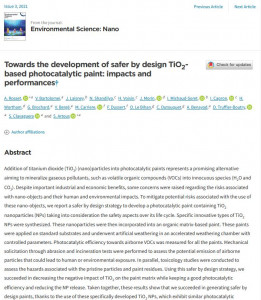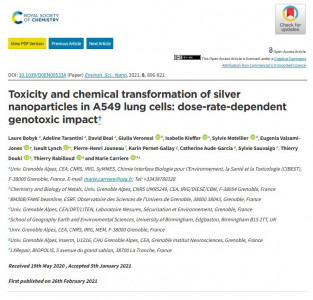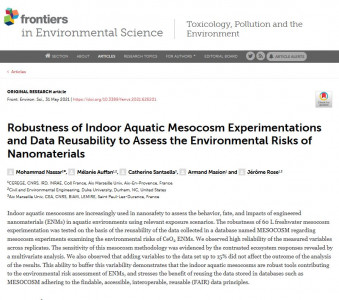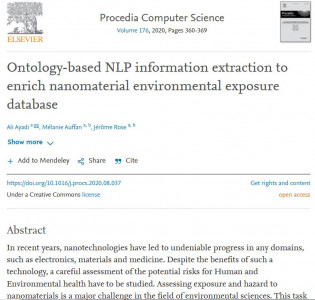Camille Larue et al. have recently published a paper in Journal of Hazardous Materials.
The study investigated the Fate of pristine TiO2 nanoparticles and aged paint-containing TiO2 nanoparticles in lettuce crop after foliar exposure".
Abstract
Engineered TiO2 nanoparticles (TiO2-NPs) are present in a large variety of consumer products, and are produced in largest amount. The building industry is a major sector using TiO2-NPs, especially in paints. The fate of NPs after their release in the environment is still largely unknown, and their possible transfer in plants and subsequent impacts have not been studied in detail. The foliar transfer pathway is even less understood than the root pathway. In this study, lettuces were exposed to pristine TiO2-NPs and aged paint leachate containing TiO2-NPs and microparticles (TiO2-MPs). Internalization and in situ speciation of Ti were investigated by a combination of microscopic and spectroscopic techniques. Not only TiO2-NPs pristine and from aged paints, but also TiO2-MPs were internalized in lettuce leaves, and observed in all types of tissues. No change in speciation was noticed, but an organic coating of TiO2-NPs is likely. Phytotoxicity markers were tested for plants exposed to pristine TiO2-NPs. No acute phytotoxicity was observed ; variations were only observed in glutathione and phytochelatin levels but remained low as compared to typical values. These results obtained on the foliar uptake mechanisms of nano- and microparticles are important in the perspective of risk assessment of atmospheric contaminations.
Graphical abstract










